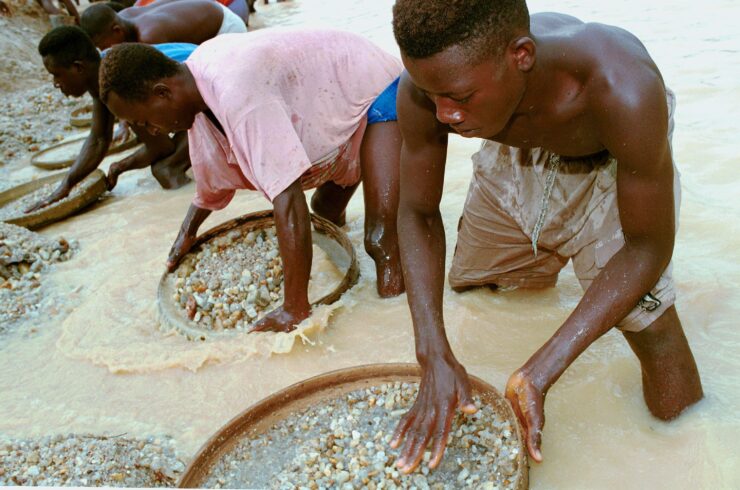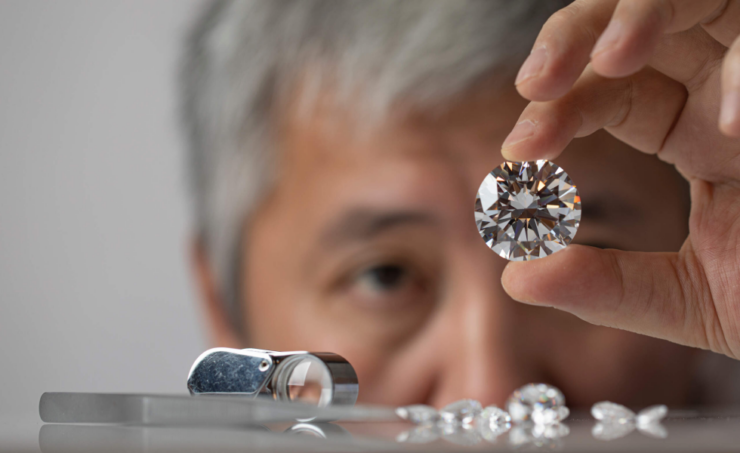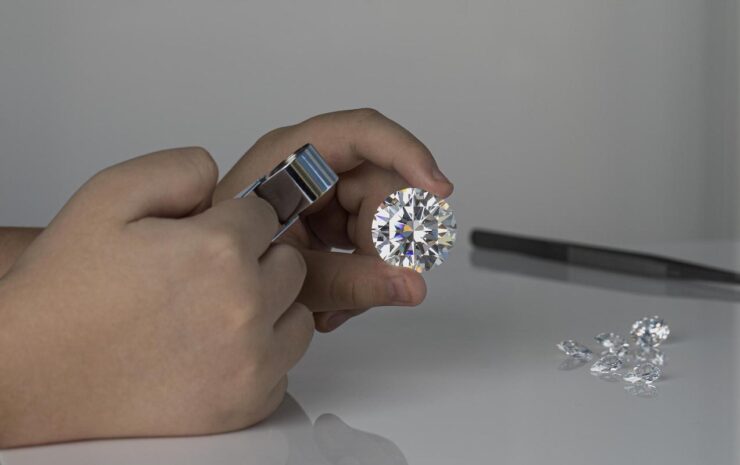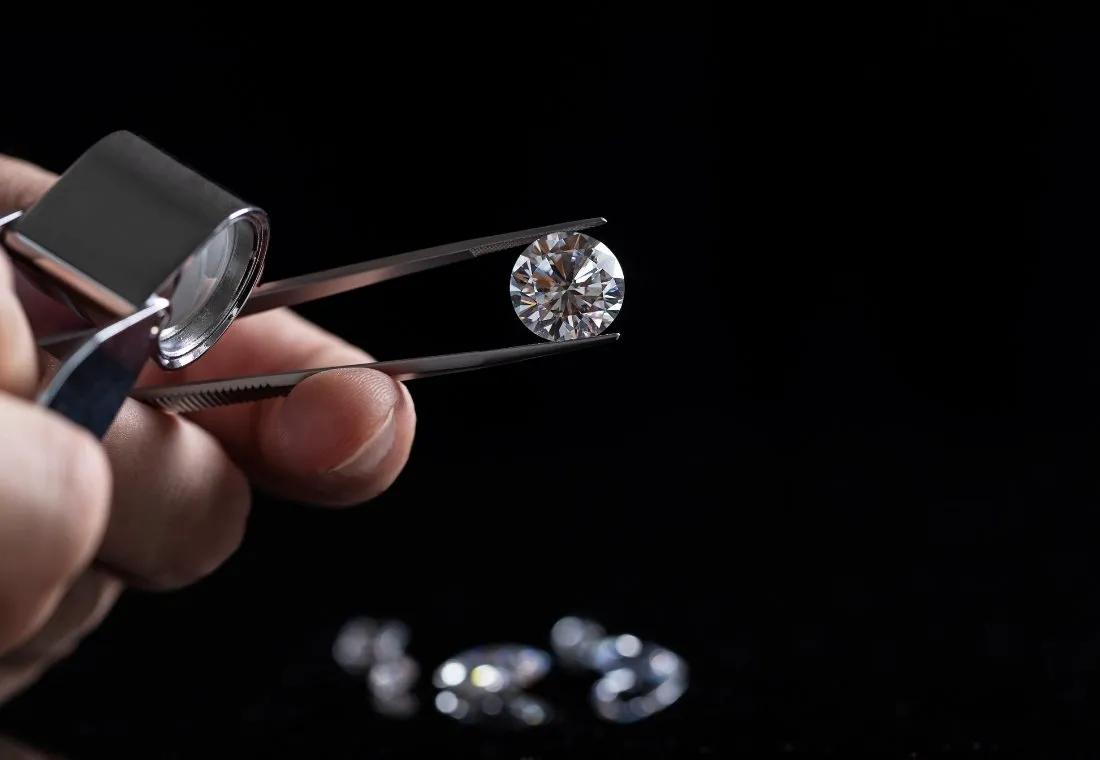Diamonds have long been considered a symbol of love, wealth, and prestige. However, the traditional method of obtaining them through mining has raised concerns over the years due to its environmental impact and ethical issues. As a result, the production of lab-grown diamonds has emerged as an alternative that provides a more sustainable and ethical option. In recent years, they have gained popularity, and people are beginning to understand their benefits. This blog post aims to explore their true worth and why they are a viable alternative to mined ones.
The Environmental Impact of Mining Diamonds
The mining of diamonds has a significant impact on the environment. The process involves removing soil and rock to reach the diamond-bearing ore, which causes soil erosion, deforestation, and habitat destruction. Furthermore, mining consumes large amounts of energy and water, and generates substantial amounts of greenhouse gas emissions. Additionally, the chemicals used in the mining process can contaminate local water sources, affecting both human and animal health. These environmental issues have led to a growing interest in lab-grown diamonds, which have a much lower environmental impact.
The Ethical Concerns of Diamond Mining

The mining has been linked to various ethical issues, such as child labor, exploitation of workers, and funding of conflicts. The diamond trade has been associated with conflicts in countries like Angola, the Democratic Republic of Congo, and Sierra Leone. The profits from their sale have been used to finance armed conflict and human rights abuses, leading to the term “blood diamonds” or “conflict diamonds.” Lab-grown ones, on the other hand, are created in a controlled environment, with no human rights concerns.
How Lab-Grown Diamonds are Created
They are created using advanced technology that mimics the natural diamond-growing process. The process involves placing a small diamond seed in a chamber filled with carbon-rich gasses. The gasses are heated to extreme temperatures and pressures, causing the carbon to vaporize and deposit onto the seed, forming a new diamond crystal. The resulting crystal is then cut and polished in the same way as a mined one. They can be produced in a matter of weeks or months, compared to the millions of years it takes for a natural one to form.
The Cost Comparison Between Mined and Lab-Grown Diamonds
The cost of lab-grown diamonds is significantly lower than that of mined ones. The mining process is labor-intensive, involves significant investments in equipment, and is subject to unpredictable supply and demand. In contrast, lab-grown ones are created in a controlled environment, with predictable production costs. The cost of producing them is around 30% to 40% lower than that of a mined diamond. This makes them a more affordable option for consumers, without compromising on quality. If you are interested in buying a lab-grown diamond, you can find a range of options online and in-store, including lab diamonds UK. Overall, lab-grown ones provide a valuable alternative that benefits both consumers and the planet.
The Quality and Physical Characteristics of Lab-Grown Diamonds

They have the same physical and chemical properties as mined ones, making them indistinguishable to the naked eye. They have the same hardness, brilliance, and fire as mined ones, and are graded using the same 4Cs – carat weight, cut, color, and clarity. They can be certified by independent gemological laboratories, such as GIA and IGI, ensuring their authenticity and quality. In terms of durability and longevity, they are just as durable as mined ones and can last a lifetime.
The Cultural Significance of Diamonds and the Rise of Lab-Grown Diamond Popularity
Diamonds have been a cultural symbol for centuries, and their popularity has continued to grow over time. However, the rise of lab-grown diamonds has disrupted the traditional industry, providing consumers with an ethical and sustainable alternative. Consumers are increasingly aware of the environmental and ethical impacts of the products they buy, and this industry is no exception. Lab-grown ones offer a more conscious and responsible option for those who want to buy a diamond but are concerned about the social and environmental impacts of diamond mining.
The Potential Investment Value of Lab-Grown Diamonds
While diamonds have traditionally been viewed as a luxury item or a symbol of love, they can also be considered an investment. Their value has historically increased over time, making them a potentially valuable asset. Lab-grown diamonds, being a newer market, do not yet have a long-term track record, but some experts believe they may have investment potential. As the demand for them increases and their production becomes more efficient, their value may increase, making them an attractive investment option.
The Future of the Diamond Industry: Lab-Grown Diamonds vs. Mined Diamonds

The diamond industry is undergoing a significant transformation with the rise of lab-grown diamonds. While mined ones are still the dominant market, the demand for lab-grown ones is rapidly increasing. According to a report by Bain & Company, the lab-grown market is expected to grow at an annual rate of 15% to 20% over the next decade, with an estimated market size of $15 billion to $20 billion by 2030. This growth is driven by increasing consumer demand for ethical and sustainable products, as well as their lower cost.
Conclusion: The True Worth of Lab-Grown Diamonds
In conclusion, the true worth of lab-grown diamonds lies in their sustainability, ethics, affordability, and quality. They have the same physical and chemical properties as their mined counterparts, making them a high-quality alternative. As the demand for them continues to increase, the industry is likely to undergo a significant transformation, with lab-grown pieces becoming a more prominent player in the market.
It is important to note that while they offer many benefits, they are not a perfect solution. Their production requires a significant amount of energy, and the source of that energy can impact their sustainability. Additionally, they are still a relatively new market, and their long-term value as an investment is not yet fully established. However, as the technology and production methods continue to improve, they have the potential to become a mainstream and sustainable option for those who want to buy a diamond without compromising on quality or ethics.

